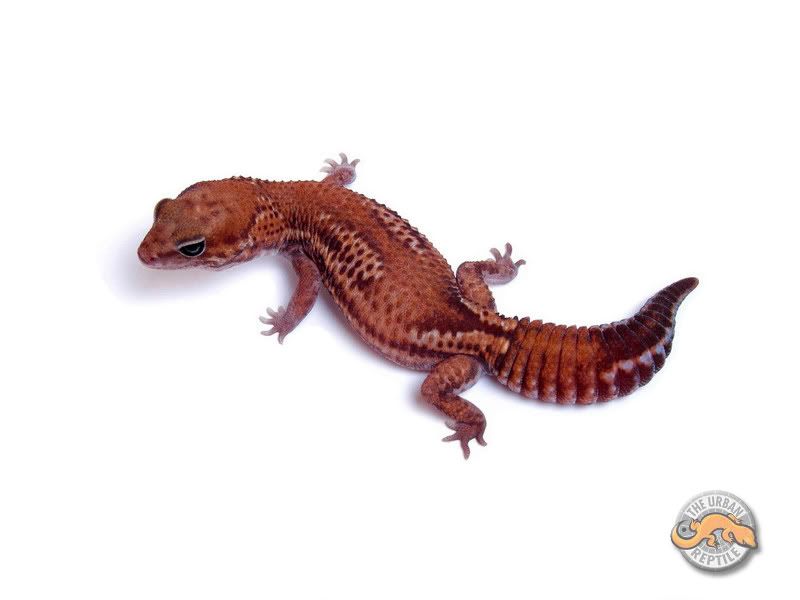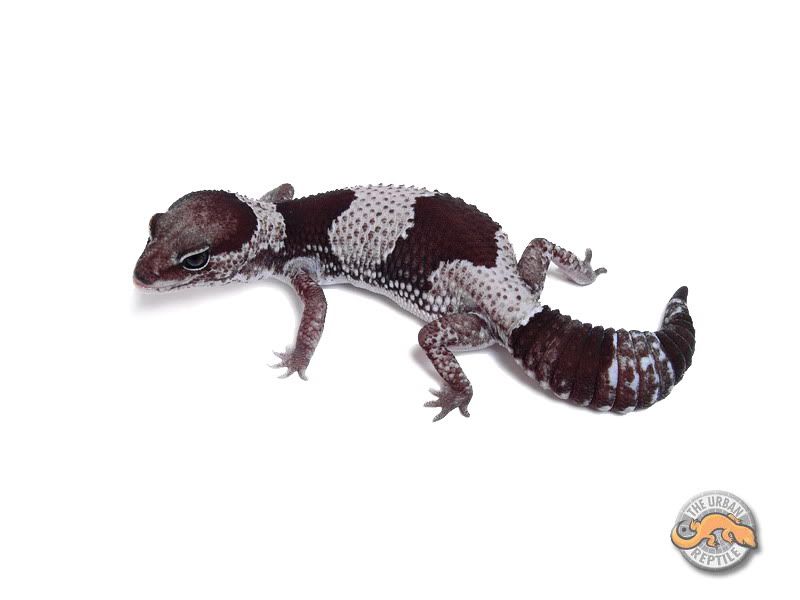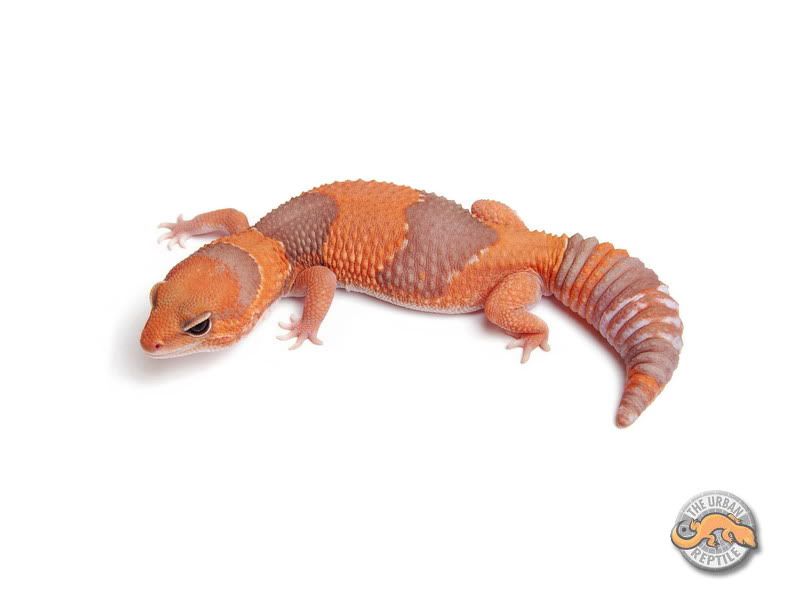Results 41 to 50 of 93
Thread: African Fat Tailed Gecko Lovers
-
05-27-2011, 10:18 PM #41
 Re: African Fat Tailed Gecko Lovers
Re: African Fat Tailed Gecko Lovers
-
05-27-2011, 10:20 PM #42
 Re: African Fat Tailed Gecko Lovers
Re: African Fat Tailed Gecko Lovers
More info about the breeding of AFTs from TUG
-African Fat-Tailed Geckos can successfully be bred in captivity by following several basic but essential steps. African Fat-Tailed Geckos will usually reach maturity and be ready to breed once they have reached 15-18 months. Although they may breed at younger ages we have found waiting has resulted in greater breeding success. Breeding males are typically 40 grams and females are between 40-45 grams. African Fat-Tailed Geckos always lay eggs in pairs and in their prime and average female will produce three to four clutches per year.
Sexing African Fat-Tailed Geckos is relatively easy once you know what to look for. You should examine the underside of the gecko, just below the vent and if you see enlarged hemipenal bulges you have a male. Females can show some enlargement in this area, but display a smooth enlargement without any depression. The second method involves locating a male’s preanal pores, which are located in a V- shaped pattern just above the vent. Although females will exhibit similar pores they are not as pronounced and can sometimes be unnoticeable at first glance whereas the males are very obvious.
Breeder African Fat-Tailed Geckos should be put through a cooling or cycling period to help stimulate the breeding cycle. Before geckos enter the cooling period it is crucial to completely empty their digestive tracks. During cycling temperatures are lowered to the high 60’s(F) to low 70’s(F) Only water is made available during this period, which should range between four to eight weeks.
Once the cycling period is over temperatures should be brought back to normal levels and a regular feeding program. As soon as the geckos have acclimatized to the regular temperatures the males can be introduced to the females. A general rule of thumb is that each male can successfully breed up to six females. Within six weeks the females will start becoming larger and a look at their underside will show the outline of the developing ovum. At this time a nesting box should be introduced with a small entrance hole and a good layer of moist vermiculite where the female can bury her eggs (the vermiculite will prevent the eggs from drying out.)
Eggs should be removed daily from the nesting box and placed into an incubator. The eggs should careful be placed in an airtight container on top of a bed of moist vermiculite. African Fat-Tailed Geckos can be temperature sexed with males incubating at 88-90F, females at 80-82 F and mixed sexes at 85-86F. During incubation containers should be opened twice a week to allow fresh air and to remove condensation that has formed on the lid.
Finally, it is important to separate the males and females at the end of each breeding season so that the females are given a chance to recuperate.
Hatchlings
When the babies emerge from the egg they quickly become active and measure about one quarter of the size of an adult. Babies should immediately be moved to a hatchling enclosure, which is essentially a smaller version of the adult’s enclosure. Housing hatchling individually in a shoe box sized containers is an effective way to help reduce stress through their transition period. Initially only water should be offered and enclosures lined with moist paper towel. After a hatchlings first shed is complete, which is around day 10, you can offer baby pinhead crickets and switch to a paper substrate.
Selective breeding
Breeding projects are one of the most fascinating and dynamic aspects of African Fat-Tailed Geckos in captivity today. There has been a surge in the number of new morphs over the past 5-years as the popularity of the African Fat-Tailed Gecko has surged. Morphs range in varying colors and patterns all of which are based on specific genetic traits. You can now select from pattern variations such as Stripes or Patternless to extreme color morphs including the great contrast of the black and white Oreo morph to the rich caramel bands of the Caramel Albino.
Some morphs such as Albinos or Patternless have specific genes that when bred together will produce the same genetic characteristics. Other morphs, such as White-outs, Ghosts or Amels, will also pass along their traits to their offspring but the coloration or intensity of the specific trait can be shown in varying degrees. These morphs have the potential to continue to develop and evolve over multiple breeding seasons.
My advice to anyone looking to a breeding project is to start out with a clear idea of what your project will be, keep meticulous records and to have fun
– it is a very rewarding and exciting experience!
-
05-27-2011, 10:22 PM #43
 Re: African Fat Tailed Gecko Lovers
Re: African Fat Tailed Gecko Lovers
hey guys hehehehe super noob question ^^ how is it different from leopard geckos ? ^^ sorry sa pag ka bogo nako ^^ they look the same ra man gyd ^^
-
05-27-2011, 10:30 PM #44
 Re: African Fat Tailed Gecko Lovers
Re: African Fat Tailed Gecko Lovers
im sure u already knw what an LG is so heres the diff
African fat tail geckos originate in West Africa.They live in dry arid regions of Senegal and Being Cameroon.Being nocturnal reptiles,AFT's spend a lot of their time during the day in dark,humid places.AFT's are terrestrial that find crevices under and between rocks to hide.Although they can climbed a little but they are clumsy at it.African fat tail geckos are similar to the leopard gecko except for a few differences.AFT's are stockier,have exactly smaller feet,and bulkier heads.They, also, require more humidity than their leopard gecko cousins
more info:
Leopard geckos and african fat tails share the same body type but have very different needs.
AFT's prefer humidity where as leopard geckos are a desert lizard.
Fat-tails have a tendency to be a little fatter in the body and tail. They move slower than a Leo does. If you want a more interactive species go with the Leo. But Fat-tails are very interesting as well.
-
05-27-2011, 10:30 PM #45
 Re: African Fat Tailed Gecko Lovers
Re: African Fat Tailed Gecko Lovers
they are in a total diffrent Genus of reptiles
aside from that,,....they also do have physical differences
and base on my research before AFT's are more nocturnal than leopard geckos
for more info just GOOGLE IT.. sir ehehehehe
basta daghan na sila ug kalahiaan name ug appearance lng daan lahi na..^_^
-
05-27-2011, 10:32 PM #46
 Re: African Fat Tailed Gecko Lovers
Re: African Fat Tailed Gecko Lovers
here are some morphs i forgot to put, here they are
Stinger

Oreo

Caramel Albino

-
05-27-2011, 10:33 PM #47
 Re: African Fat Tailed Gecko Lovers
Re: African Fat Tailed Gecko Lovers
here a care sheet of an AFT
African Fat Tail Gecko
For leopard gecko pls refer to Cebu Gecko Society
https://www.istorya.net/forums/pet-di...o-society.html
-
05-28-2011, 08:35 AM #48
 Re: African Fat Tailed Gecko Lovers
Re: African Fat Tailed Gecko Lovers
Morning Guys hehehehehehe
-
05-28-2011, 09:26 AM #49
 Re: African Fat Tailed Gecko Lovers
Re: African Fat Tailed Gecko Lovers
this will be very helpful if and when i finally get an AFT. haha..when pa kaha...
-
05-28-2011, 09:39 AM #50
Advertisement
Similar Threads |
|








 Reply With Quote
Reply With Quote

